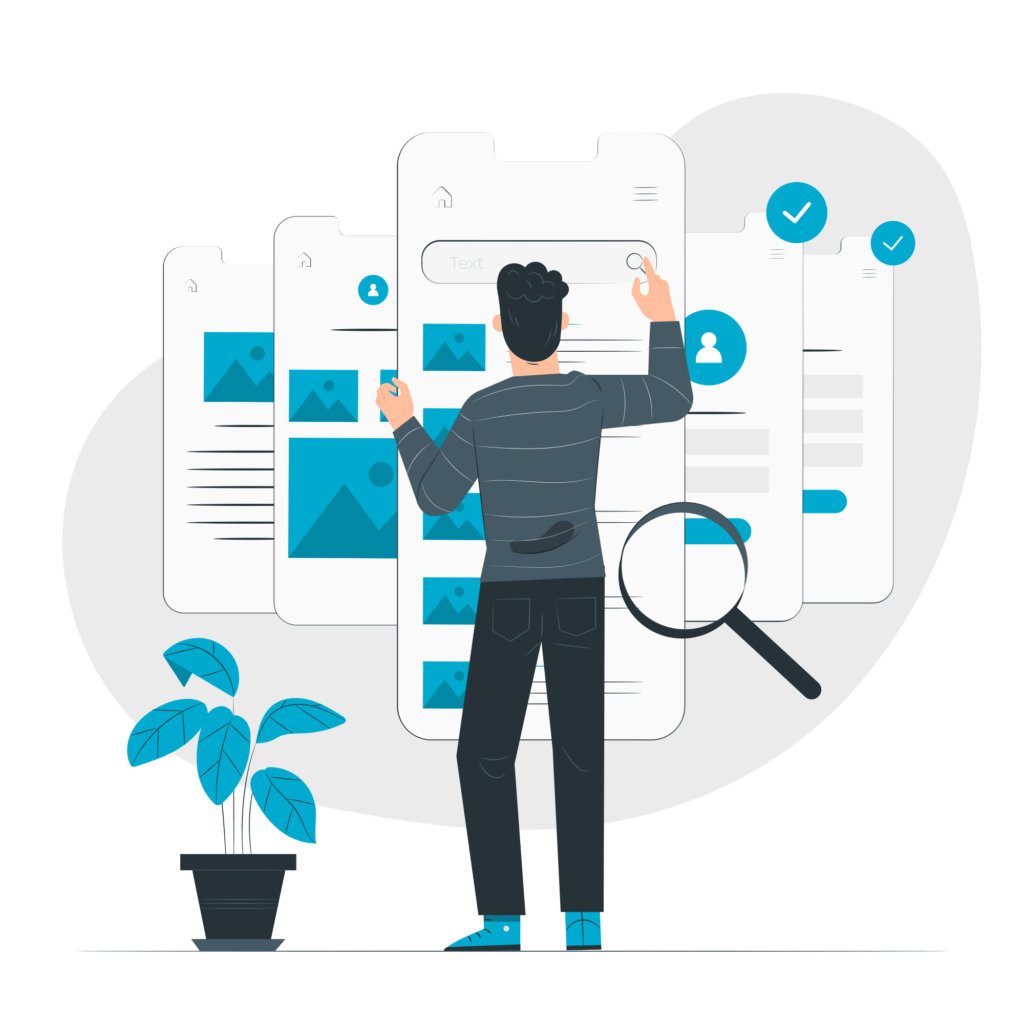What methodology should be adopted to build the most adapted learning path ? 
Today’s learning projects face many challenges. Since the development of digital learning, it has been difficult to ensure that learners are truly engaged in their learning path. This is in contrast to face-to-face learning, where it is easier to follow whether the learner is motivated. Moreover, learners are used to using many user-friendly platforms such as streaming services or even social networks. A platform that does not meet learners’ needs will not help them achieve the same learning impacts. They are likely to get bored easily. Thus, they have more and more expectations and are eager for effective and useful experiences.
The recommendations resulting from design thinking, which we are going to share with you, are intended to facilitate the work of the instructional designer and save them time. How can this be done? By enabling them to quickly come up with a solution that meets the needs of learners and maximizes the educational impacts.
It should be noted that the methodology we are sharing with you might only apply to certain learning paths considered innovative or strategic for the company.
1. Understand who you are addressing
Nowadays, the quality of a learning path is no longer enough. Learner engagement is correlated to the experience they will have during their path. It is therefore important to understand that a good experience stems, firstly, from a good understanding of the needs.
Like experience design and agile methods, understanding users means empathizing with them. What do they experience? What do they think? What do they feel?
This approach implies the implementation of behavioral analysis methodologies in order to decipher the user’s behavior when faced with a given content, their reactions and impressions.
This phase starts with actively listening to users, which allows you to explore and understand their behavior.
You can take the time to observe the user, talk to them and discuss their motivations, objectives and obstacles. You can also take an interest in their ecosystem and their interests.
Each insight you gather contributes to build the project. And each piece of data allows you to see a little more clearly the future decisions you will make.
In this phase, there are several techniques that can be used to collect data, such as:
- Observation, where the data collected consists of behaviors, attitudes and social interactions. The observation of an individual is carried out in the context of their natural environment, without interfering in the situation being observed. When designing a learning path we can, for example, take an interest in the ways in which individuals “consume learning”: learners tend to work at their desk in front of a computer or are they more likely to be in the field? Are they used to learning in two-hour or ten-minute sessions? Etc.
- The user interview, which consists of a dialogue between you and your potential user. The idea is to ask the interviewee a good number of questions in order to maximize the collection of qualitative data. Unlike the satisfaction questionnaire at the end of the learning path, the aim here is to anticipate the needs of the learners.
- Behavioral analysis, with behavioral recording tools, which can help to determine the weaknesses of a learning path, but also areas for optimization. For this, we can look at the data generated from the learning platforms used by learners to see how they interact with them: what elements generate good engagement over time? What makes them drop out?

2. Test & Learn
The phase of actively listening to the learners makes it possible to identify their needs, categorize them and prioritize them, thus giving rise to the second phase: the creation of a learning pilot.
Are you familiar with the concept of “Test and Learn”? Well, here we are!
It involves placing the pilot session as a key stage in the learning design process. As a real laboratory, the pilot session becomes the moment of confrontation with “beta testers” in an iterative way. It is an opportunity to make decisions on the changes to be made with a view to the final implementation.
During the test sessions, it is important to remain attentive and vigilant to any change in users’ behavior and needs, and to be responsive by adjusting the solution.
Nothing can be taken for granted, even if all the steps have been thoroughly followed. It is very important for the organization to bear in mind that the pilot may not be relevant to the target users for one reason or another. This is why “test and learn” remains a good practice to avoid implementing a project that is obsolete or that does not match the learners’ expectations or the company’s needs.
Conclusion
The user experience should be a key factor in all fields and in corporate learning. This user-centric approach places satisfaction as a main objective to be achieved, to apply a methodological design process to provide an engaging experience for the learner.
It defines the user’s feelings, perceptions and needs during the overall project experience. It is a holistic view that is based on several concepts and techniques with the aim of designing useful, accessible, desirable and valuable learning.
Latest news
Our latest articles about the topics: learning, science and Domoscio's news.